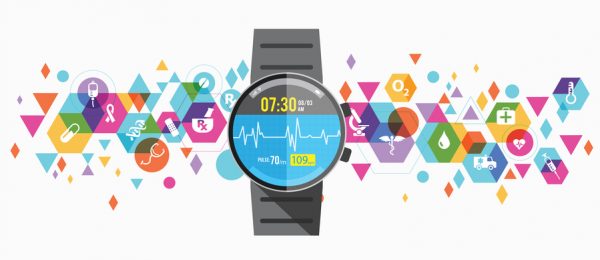
A number of pivotal announcements this year – including Neuralink’s first brain implant trial, and major funding rounds from companies such as Motif Neurotech with its miniaturized neurostimulator for depression – ignited a wave of excitement in the neurotech space. This surge in interest transcends individual breakthroughs and signifies a fundamental moment for the industry.
A future where stress management requires just a gentle electrical pulse, or where cognitive decline is mitigated through personalized brain training exercises, has moved from the realm of science fiction to attainable reality. However, for neurotech to unlock its true value proposition, it must overcome the critical hurdle of establishing trust with the public.
The healthcare landscape is littered with cautionary tales. Unfulfilled promises and abandoned technologies, such as Hello’s sleep-tracking ball and Lantern’s behavioral health platform, serve as cautionary tales of the pitfalls of inflating expectations. Meanwhile, the recent issue of some Neuralink threads retracting, while still completely safe for the research participant, has highlighted the imperative of demonstrating clinical validation for new technologies.

The Power of One: Redefining Healthcare with an AI-Driven Unified Platform
In a landscape where complexity has long been the norm, the power of one lies not just in unification, but in intelligence and automation.
Neurotech has the potential to fundamentally transform how we approach mental health and cognitive function. However, for users to fully embrace this transformation and realize the benefits, trust must be the cornerstone.
Building a foundation of trust: Integration into daily life
Who hasn’t downloaded a wellness app, only to stop using it a few days or a weeks later? Or purchased exercise equipment, only for it to sit on the shelf?
Certain habits of mindfulness and fitness can easily fall by the wayside, or not even get off the ground. Yet other habits, such as brushing teeth and daily grooming have become routine. There are clearly gaps of integration that must be bridged for people to appreciate how taking care of their mental and physical wellbeing is as central as daily hygiene.
The potential benefits of emerging neuroscience technologies range from optimizing stress management, to warding off certain dementias and even enhancing the immune system. Yet the impact is contingent on user’s developing positive habits over time and can take many sessions for patients to see results. Innovators must therefore look to also demonstrate the short-term benefits of their technology and how it can also provide more immediate relief.
Neuroscience innovators must meet people where they are with products that improve compliance with the technologies. Providing solutions that are similar to products people already use in their everyday lives will reduce people’s reluctance to using novel products, improve compliance, and encourage continuous use for better outcomes. Concurrently, the new generation of neurotech engineers need to avoid the tendency of designing solutions under the assumption that all users are already comfortable with their technology and consider that a significant proportion of intended users may not be able or willing to use mobile devices.
The rise of wearables entails greater need for trust
Wearables have enjoyed widespread adoption over the last decade, as the miniaturization of technologies expanded their capabilities and accessibility. In numerous cases, especially in the field of healthcare and wellness, options arose to adjust settings and access data through mobile apps. While this heralded significant benefits in providing both users and caregivers insights where interoception fell short, it also led to trust concerns regarding data privacy and patient confidentiality.
Companies across the wearable health tech space have been incorporating trust and privacy considerations alongside the usability of their offerings. The consumer neurotechnology space quickly followed suit, with some companies pledging to not share or sell users’ brain data. Still, a recent report by the Neurorights Foundation reviewing 30 different consumer neurotechnology companies gave alarming takeaways that only 40% of companies allow users to withdraw consent and delete their data. 10% of these companies engage in comprehensive data security measures, such as encryption and notification of data breaches. As with other biosignals, neural data might reveal personal insights and health information, even if neural sensors are not marketed as medical devices.
HIPAA regulations for patient privacy generally do not apply to consumer wearables or devices used outside of those covered by healthcare systems. As consumer-oriented devices continue to proliferate, developers must ensure trust in their products by developing solutions that are effective, user-friendly, safe for unsupervised use, and offer strong protections for sensitive data. This will be further enhanced through cultural norms of what customers expect from their devices, and through well-constructed regulations to ensure standardization and provide greater confidence in emerging technologies.
Increasing users’ agency in managing their wellbeing
As technology and the trend to home-based care has encouraged people to take greater control over their health, we are now moving toward a future where, with more user-centric products, people can fine-tune how their nervous system is working.
Neuroscience products offer users autonomy in managing their own health and wellness. Direct-to-consumer technologies, such as at-home neuromodulation devices, brain-training games, meditation aids, and sleep trackers, empower individuals to take charge of their mental wellbeing without a constant need to consult healthcare professionals. This democratization of health tools aligns with a growing consumer preference for self-guided, personalized health approaches.
Neuroscience startups building consumer products must consider how users will access their products and how to gain the trust of their target audience. For devices that are on the edge between medical and wellness, this may involve improving their product viability by making products eligible through pre-tax accounts to improve their accessibility. Some products, such as Fluxwear’s pulsed electromagnetic field therapy (PEMF), may become reimbursable through pre-tax accounts or via insurance if they are prescribed.
Understanding is key
Users must understand the capabilities and limitations of neuroscience products, as they may need to discuss their use with people close to them and providing the appropriate language can help manage expectations. The science must be conveyed accurately without overhyping the benefits, as overstating capabilities can lead to disillusionment and distrust, ultimately damaging the industry’s credibility. Effective communication should involve clear, evidence-based information that helps consumers make informed choices. This becomes particularly important given the increasingly blurred divisions between medical and consumer spaces.
Inflated claims not only mislead consumers, but risk breach of trust, regulatory scrutiny and legal ramifications. Poor science communications also risks undermining recruitment of experienced talented scientists and engineers who can see through any technical jargon. The backlash against such claims can have broader implications for the neurotechnology sector, which can further erode innovation and investment.
By prioritizing user-centric design, responsible data practices, and evidence-based solutions neurotech companies can not only drive user adoption but also foster long-term brand loyalty. Such an approach will contribute to the long-term growth of companies and help pave the way for a new era of brain-powered advancements.
Photo: exdez, Getty Images
Liron Nuñez Weissman is the CEO of Corundum Neuroscience, a venture builder and fund advancing transformative neuroscience solutions from lab-to-life.
Sharena Rice, Ph.D., is a research scientist at Sanmai Technologies PBCS and a contributing editor at Neurotech Reports.
This post appears through the MedCity Influencers program. Anyone can publish their perspective on business and innovation in healthcare on MedCity News through MedCity Influencers. Click here to find out how.









